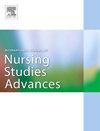员工对健康监测的满意度:新量表的开发与验证
IF 3.1
Q1 NURSING
International Journal of Nursing Studies Advances
Pub Date : 2025-06-21
DOI:10.1016/j.ijnsa.2025.100368
引用次数: 0
摘要
工作场所的健康监测包括根据工人面临的风险对他们进行职业健康检查。目标是保护他们的健康,并主动查明职业活动造成的潜在危害。然而,目前还没有一种评估工具能够关注员工对这项活动的满意度。因此,拥有一个有效的工具来衡量工人对健康监测的满意度,将能够通过持续改进的过程来优化职业卫生服务提供的护理。目的编制并验证工作人群健康监测满意度调查问卷。设计横断面心理测量验证研究。数据收集自西班牙的一家职业卫生服务机构。研究对象采用方便抽样法,共纳入600名研究对象。方法:本研究分四个阶段进行:1)问卷项目的设计、审查和选择。ii)内容验证:采用德尔菲法,由12名专家组成的小组参与。iii)试点研究:开展试点研究(n = 30名工人)。iv)结构验证:以600名工人为样本,对300名工人进行探索性因素分析(EFA)和验证性因素分析(CFA)。结果终版量表由17个条目组成,分布在4个因子中,解释总方差的63.4%。内容效度(Aiken's V系数= 0.904,Lawshe's内容效度指数= 0.868)和结构效度(Cronbach 's alpha = 0.870, McDonald's omega = 0.872,类内相关系数= 0.861)得到了验证。在一半样本的EFA中获得的因素在另一半样本中得到证实,CFA指数表明可接受的模型拟合。结论心理测量是一种有效、可靠的健康监测满意度评估工具。因此,它是职业卫生专业人员的一个有用工具,可以改善向工人提供的护理。本文章由计算机程序翻译,如有差异,请以英文原文为准。
Workers' satisfaction with health surveillance: Development and validation of a new scale
Background
Health surveillance in the workplace involves conducting occupational health examinations of workers based on the risks to which they are exposed. The objective is to protect their health and proactively identify potential harm resulting from occupational activities. However, there is no assessment tool which focuses on workers' satisfaction with this activity. Therefore, having a validated instrument for measuring workers' satisfaction with health surveillance would enable the optimization of the care provided in occupational health services through a continuous improvement process.
Objective
To develop and validate a questionnaire to assess the satisfaction of the working population with health surveillance.
Design
A cross-sectional psychometric validation study.
Setting
Data were collected from an occupational health service in Spain.
Participants
A total of 600 participants were included, selected by convenience sampling.
Methods:
The research was carried out in four phases: i) Design review and selection of the questionnaire items. ii) Content validation: participation of a group of 12 experts, using Delphi methodology. iii) Pilot study: running a pilot study (n = 30 workers). iv) Construct validation: with a sample of 600 workers, performing an exploratory factor analysis (EFA) and confirmatory factor analysis (CFA), both on sample of 300 workers.
Results
The final version of the scale comprised 17 items distributed in 4 factors, explaining 63.4 % of the total variance. Content validity (Aiken's V coefficient = 0.904, Lawshe's content validity index = 0.868) and construct validity (Cronbach’s alpha = 0.870, McDonald's omega = 0.872, intraclass correlation coefficient = 0.861) were demonstrated. The factors obtained in the EFA with half of the sample were confirmed in the other half, with the CFA indices suggesting an acceptable model fit.
Conclusions
The psychometric properties showed a valid, reliable instrument to assess workers' satisfaction with health surveillance. It is therefore a useful tool for occupational health professionals and can improve the care provided to workers.
求助全文
通过发布文献求助,成功后即可免费获取论文全文。
去求助
来源期刊

International Journal of Nursing Studies Advances
Nursing-General Nursing
CiteScore
5.80
自引率
0.00%
发文量
45
审稿时长
81 days
 求助内容:
求助内容: 应助结果提醒方式:
应助结果提醒方式:


